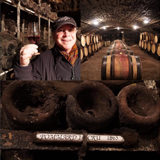
“You can’t find good wine sitting on your ass.”
Doug’s Travels
FIND GOOD SCHIST
France
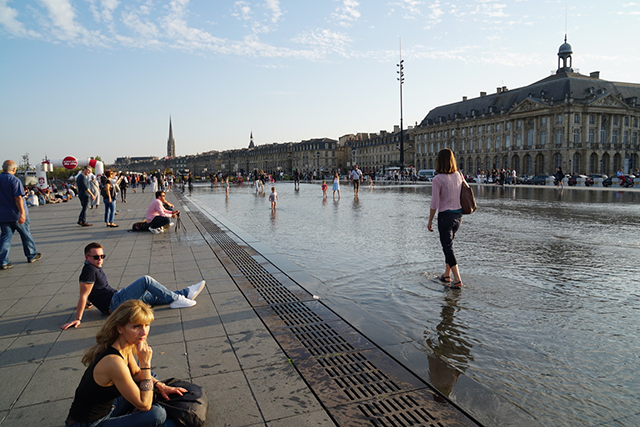
Community enjoying the plaza in the city of Bordeaux, France.
Bordeaux is back and it’s back with a vengeance, bigger and better than ever.
You should start paying attention if you aren’t already: for all of the cheap red plonk from all over the world in the under-$20 market, no other wine region in the world is making high-caliber wines for lower prices like Bordeaux right now.
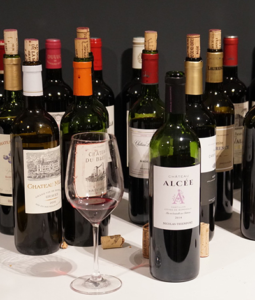
Château Réaut
I should know: I’ve been looking critically at Bordeaux wines since my first trip in 1983, when I went to evaluate the historic 1982 vintage for myself. In those days Bordeaux was a dump—decaying, dirty; run down hotels, lousy restaurants, poor or no infrastructure, drugs permeating the Gironde riverfront—a sailor’s playground and a wine guy’s nightmare. The rest of the city wasn’t much better. I actually elected to stay in the suburbs, as the city had nothing to offer.
But all of that has changed. Today Bordeaux is the place to be, arguably France’s hippest city. It’s more livable and affordable than Paris; part college town, part hipsterville, part upscale shopping Mecca, part foodie destination, and finally, a wine tourism destination. The new TGV line from Paris will get you to Bordeaux in two hours, making it a weekend retreat option for Parisians. New riverfront condos are selling as quickly as they can be built. And you have the Atlantic coast nearby with miles and miles of beautiful beaches, tidal marshes, and pine forests dotted with summer cottages and hotels. The new citywide tram system is a joy, making getting around a breeze, and as the tram system expands so does Bordeaux’s housing market. Prices for the once-inexpensive townhouses are rising steadily.
Bordeaux now beckons France’s best and brightest with big city allure, culture, good food, and a bright future.
For me, the transformation has been shocking and almost unbelievable—unbelievably good. The old city has been restored and scrubbed clean. The waterfront, once a no-man’s land, is now home to trendy shops and open-air restaurants. The vast riverfront is lined with beautiful parks and gathering places swarming with activity.
The long-awaited Cité du Vin wine museum on Quai de Bacalan dominates the surrounding skyline with is golden swirling design. Packed with interactive exhibits that I found a little heavy on pizzazz and short on substance, it’s nonetheless well worth a visit.
If you’re a dancing ’til dawn type (and under 25), the nearby I Boat is the place to be. It and copycat clubs line the nearby pier, one after the other, in stark contrast to the hulking La Base Sous-Marine just across the water. This gargantuan, bombproof WWII U-boat repair facility was vacant and decaying for decades, a relic of the Nazi occupation so well built the French government gave up on trying to dismantle or destroy it. It’s now being put to good use as a home for everything from concerts to art exhibits.
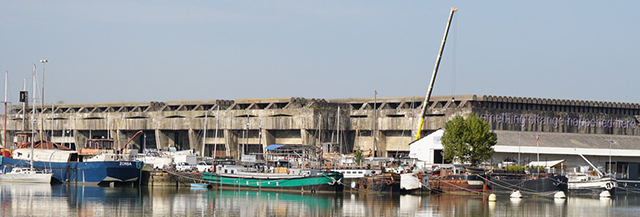
Like the city itself in 1983, most of the once grand Chateaus were in decline as well.
The winemaking was hit and—usually—miss. The crumbling cellars and fermentation vessels were neither air-conditioned nor cooled. Too many barrels were funky and old. Far too much of the winemaking was unhygienic, haphazard. Brettanomyces, a spoilage yeast, was rampant and accepted as normal—yuck!—but at least the wines were “affordable” back then: First growths could be had for 50 bucks, and second or third tier wines were far less.
Times were hard for the Bordelaise in those days: Their once-sterling reputation tarnished, they were getting their clocks cleaned by New World upstarts California, Chile, and Australia, which were producing wines from the same varieties but with a cleaner, more fruit-forward character at lower prices. Even the faithful English market started to turn its back on the region it helped create and which had dominated for a century. The French made the wine, but the English knew how to sell it and rammed it down the throats of the world—like it or not. There were always signs of trouble: in many cases, the big British buyers didn’t trust their French partners at the Chateaus to bottle their own wine properly. In those days the bigger import houses (i.e. Berry Bros, Harvey’s etc.) imported the wines to Great Britain in bulk and bottled them themselves.
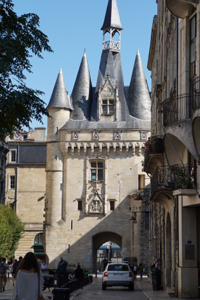
Bordeaux, France
Changes for Bordeaux began in earnest in 1978, with the coming of Robert Parker and his new publication, The Wine Advocate. Parker declared 1982 “…a vintage of legendary proportions for all levels of the Bordeaux hierarchy. In short, it is a vintage which has produced the most perfect wines in the post-World War II era.” While other wine journalists were slow to lavish the 1982 vintage with praise, Parker bet the farm and won big. He single-handedly became the savior and pied piper of Bordeaux. Armed with his then unique 100-point rating scale, a novice could easily get into the First Growth game.
Parker forever changed wine criticism, and with it the wine business. People who had never bought a bottle of Bordeaux were buying cases based on Parker’s recommendations. The once cash-strapped Chateaus had little or no trouble selling their wine if Parker’s scores were good, so they quickly shifted toward a style of wine that pleased him. The cycle continued, and money kept flowing into Bordeaux like crazy.
But there was a catch.
The good part was that as the Chateaus became more prosperous they updated and modernize their cellars, replanting old vineyards and in many cases finally cleaning up the winemaking. The bad part was that when the big money started to roll in, so did the taxmen. French tax men. And no one can tax you like the French—they can even tax you retroactively. Gotta love ‘em. Many family-owned Chateau were forced to sell due to crushing inheritance taxes. In some cases family members couldn’t agree on a plan for the future. Some just wanted to cash out, forcing a sale. Selling was tempting, as large conglomerates noticed the region’s moneymaking potential and saw a new target for acquisitions.
Another factor in Chateau sell-offs was that some families grew weary of the hard work and capital-intensive nature of keeping these large estates running. Unlike many wine estates around the world, Bordeaux domains couldn’t be split up parcel by parcel: if they did, they’d cease to exist. Their worth was tied to the whole entity, the sum of all its parts.
Family estates were quickly becoming a thing of the past. As the market for “classified growths” expanded worldwide, prices skyrocketed. The wines I collected and enjoyed—Leoville Las Cases, Ducru-Beaucaillou, Cos d’Estournel, Pichon Lalande, Beychevelle, Lynch Bages, etc. were now out of my reach. I couldn’t even afford their “second” wines, and that sucked.
I and many other wine lovers abandoned Bordeaux and didn’t return for nearly 20 years.
Then in 2004 (a so-so vintage) and again in 2005 (a great vintage) I attended the Union of Grand Cru Tastings, comprised of the classified growths or upper tier of Bordeaux wines, held every April for the trade. It’s a grand affair with buyers and journalists from all over the world descending on Bordeaux to sample a so-called “representation”—skimming the cream for rubes—of the final wine of the previous year, giving “futures” buyers a glimpse of the wines to be offered in advance.
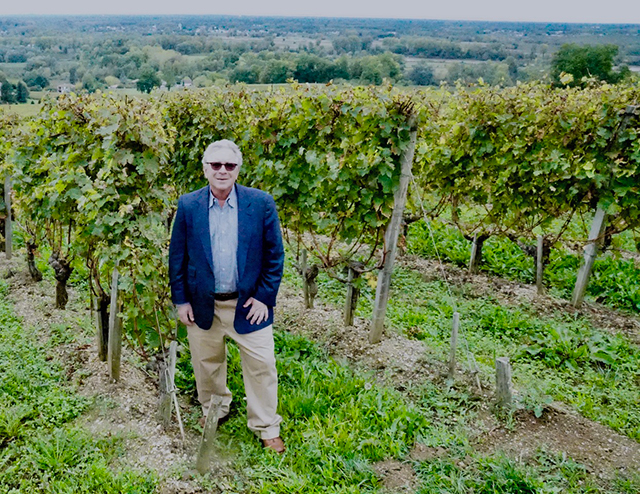
Doug Rosen at Château Réaut in Bordeaux, Franc
Each commune has own tastings and events, enabling buyers to try a wide array of wines from all over the region fairly easily. Many upper tier domaines host private tastings of older wines, with elaborate lunches and dinners usually for big corporate buyers. I quickly grew weary of these shenanigans and started to ditch the B.S. events and hang out with friends who knew the region well; people who could steer me to wines that were actually affordable, wines that my clients could actually buy without taking out a second mortgage. I focused on wines that could retail for under 35 bucks—bargain basement by Bordeaux standards.
I started to find some winners and, as I discovered more and more of these wines, decided it was time to once again take Bordeaux seriously.
Which leads me to this gem, Chateau Reaut. This wine kicks ass and takes names. It punches hard and really delivers. It tastes like a Bordeaux should taste, it will age beautifully, it’s a screaming bargain, and the fact that it got 92 points from wine journalist James Suckling doesn’t hurt—all at $16.99/bottle by the case. It’s stupid good.
Let me tell you why:
Chateau Reaut was originally the pet project of Louis Roederer, the grand marque champagne house, which scouted out this property to add to its portfolio. They knew good ground when they saw it—“privileged,” they like to say—and because of its off-the-beaten-path location Reaut was a bargain. Roederer snapped it up in the hopes of adding a more modestly priced wine to its Bordeaux portfolio.
To start, 26 hectares were repositioned and replanted with each parcel carefully studied, taking into account sun exposure, soil structure, and elevation. Vines were planted using the same spacing as the Grand Crus, 5,500 per hectare. No expense was spared. Merlot and cabernet franc were planted to 18 hectares of south/southwest facing, clay/limestone hillsides. The remaining hillsides, where the soils were more gravelly and thus more porous, were perfect for cabernet sauvignon.
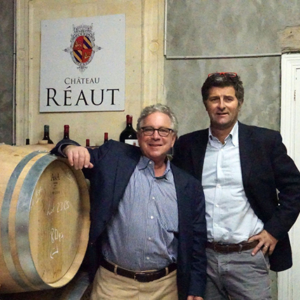
Doug Rosen and Yannick Evenouat Château Réaut in Bordeaux, France
The winemaking team was also upgraded. Roederer stole the brilliant (my words not his) Yannick Evenou from the prestigious Chateau La Dominique estate in Saint Emilion, an international champion at turning wineries around, to manage the domain. Roederer then sat back and let Evenou work, and it didn’t take long: the very first vintage bottled under the new Reaut label blew everyone away. When thrown into blind tastings it outclassed many of the far more expensive wines Roederer represented.
Reaut’s success posed a serious problem for the parent company; it was too good. If it were to be shown alongside its brethren it’d smoke them. So, Roederer did what any self-respecting multinational would do—they shredded it. Management realized it had to sell Reaut off in order to avoid embarrassment.
Yannick, seeing Reaut’s potential and conveniently having been a classmate and friend of Roederer’s new director, made a play for it. He approached five friends from Bordeaux and six from Burgundy to form the backbone of an association consisting of 400 private shareholders from fifteen countries to buy Reaut. Yannick retained his directorship but also brought in his friend Michel Rolland, the world’s most famous consulting winemaker, adding cache and star power, and raising the Chateau’s international profile substantially.
If you have never experienced a red wine from Bordeaux, I’m telling you now is the time and this is the one you need.
The 2015 Chateau Reaut is a blend of 58% merlot, 37% cabernet sauvignon and 5% cabernet franc. This wine has it all: from the deep crimson color to the classic nose of red berries, laser-like minerality, and palate-coating velvety tannins it’s a class act, suave from beginning to end. And from the no-brainer 2015 vintage, it’s a must-have. This is a wine that will make you a Bordeaux drinker for the rest of your life. Enjoy it now and for years to come.
One more thing, and this is the strange part for me: I encourage you to visit Bordeaux. Take my word for it; it’s now one of France’s great cities. There are many nice hotels, and some Chateau have caught the Bed and Breakfast bug if you prefer a more bucolic experience.
There is a bevy of great restaurants now.
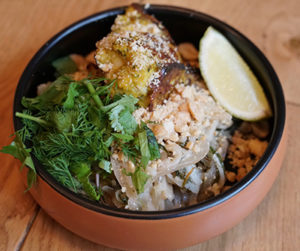
Food at Mampuku in Bordeaux
If you’re looking to hobnob with the locals, a must visit is Cochon Volant (“flying pig”) at 22 Place de Capucins. I love this place—it’s fun and friendly, with a downhome atmosphere and delightful staff. Best of all it’s a carnivore’s delight. Everything I have eaten there has been first rate, and the wine list is great and reasonably priced.
If you’re into natural wines you be hard pressed to find a better spot than Le Flacon on 43 Rue Cheverus. It has a well-chosen wine list and a tapas-style small bites menu that is sure to please. It’s tiny, so get there early.
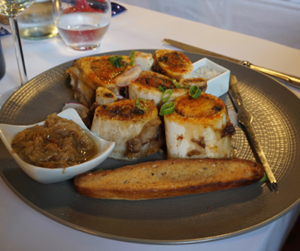
Bone Marrow at Le Chiopot, Bordeaux, France
If Asian fusion is more your thing then Mampuku on 9 Rue Ausone is an excellent choice in the old city. It’s fusion done right—which ain’t easy.
Finally, if you want to eat like a rugby player and experience “American-style” large portions, Le Chiopot on 281 Allée des Quatre Castéra is right up your alley. The avant-garde decor belays the nature of the serious eating going on here. Whether it’s expertly prepared bovine slab, bone marrow done right, sole meuniere or fresh sautéed cèpes you’ll find yourself well served.
The fortunes and reputation of Bordeaux have been on a rollercoaster ride over the past 150 years or so, from wine of the people to plaything of the 1% and back. From rural farmlands to rough, decaying city to gleaming tourist attraction. Bordeaux is in a good place right now, and right now is exactly when to take advantage of these good times for both the region and its wine.